Learn about how plants drink water with capillary action in this super-fun color changing flowers experiment where the flowers burst into a rainbow of color! Kids of all ages will love it!
Rainbows are totally amazing, and so are flowers. Combine them in this super-fun color-changing flowers science experiment. It’s a fun addition to rainbow science experiments!
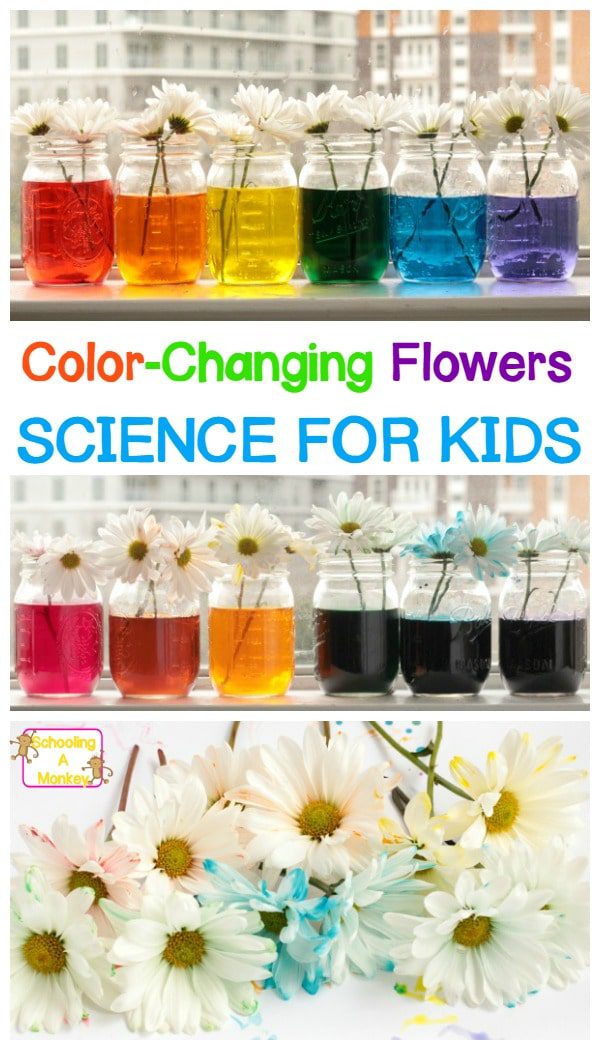
Rainbow Flowers Capillary Action Science Experiment
In this experiment, you can see it happen because the flowers will gradually change color!
But not always like you think. Our flowers changed color at the very tips first!
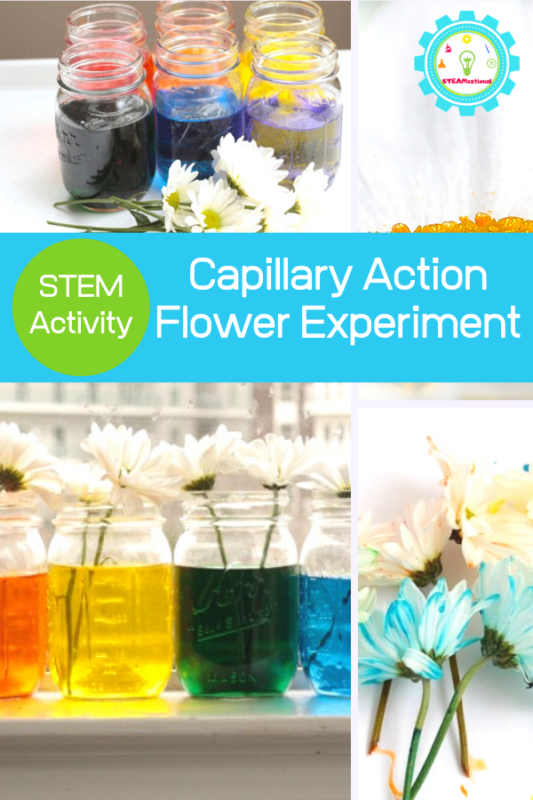
The Science: Capillary Action for Kids
The reason flowers change color has to do with how they soak up water.
All plants require water to survive, but they drink it from the ground. So, to move it from the ground to the leaves, plants use what is called “capillary action” to move the liquid to the top of the plant.
Basically, this happens by water evaporating in the leaves, causing a pressure change in the stem that helps the liquid from the roots rise to the surface.
Why do flowers change color with food coloring?
Flowers change color with food coloring due to capillary action. Plants take up water through the roots or stem and bring it up to the flower petals. When the water is dyed, the color moves along with the water and dyes white leaves colors!
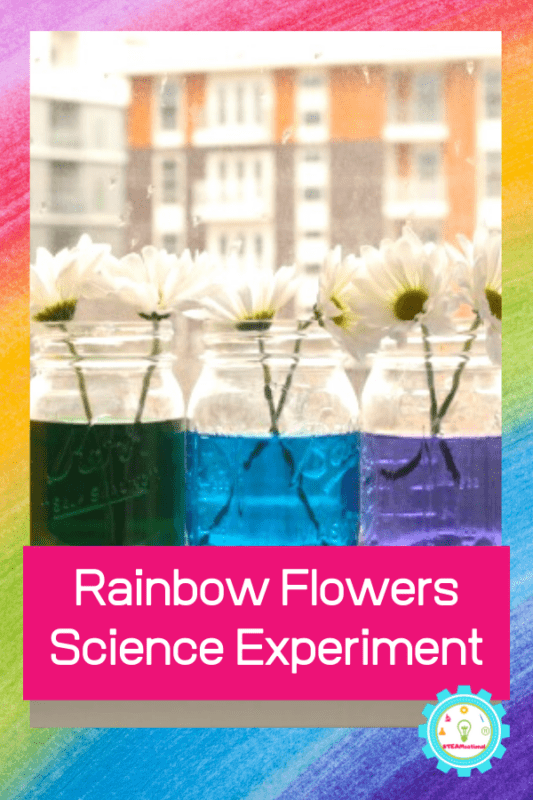
Why would capillary action be critical for plants to survive?
Water doesn’t usually travel vertically due to gravity. So that means, if there wasn’t capillary action involved, plants could only get water if their roots were directly touching water. That would be almost impossible for plants to do!
If we didn’t have capillary action, plants would have evolved another way to get water. Possibly by being able to move around like animals and humans!
This experiment would also be a fun addition to science experiments for St. Patrick’s Day, spring science experiments, St Patrick’s Day STEM activities and spring STEM activates!
What you’ll need for the rainbow flowers experiment:
- White flowers (carnations are best)
- Liquid food coloring (we order from Amazon because it can be hard to find the right kind in stores)
- 6 mason jars
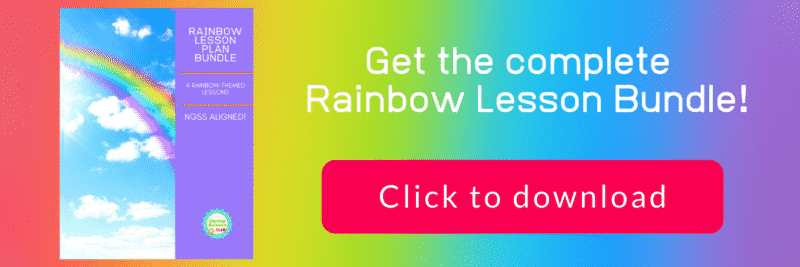
How to Do the Capillary Action Experiment with Flowers
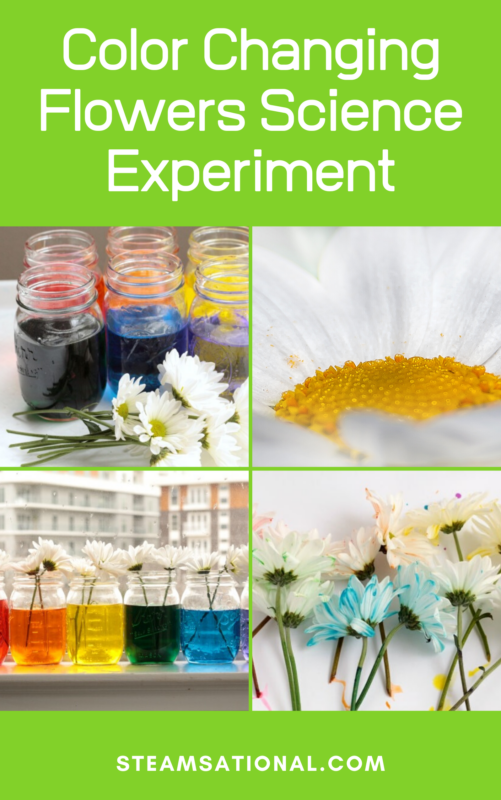
Fill each jar with about 6 ounces of water. Place one color of the rainbow in each jar. We used just about a full container of liquid dye in each container to get the colors we did, but we did have too much water to begin with.
Start with about half a container of dye and go from there.
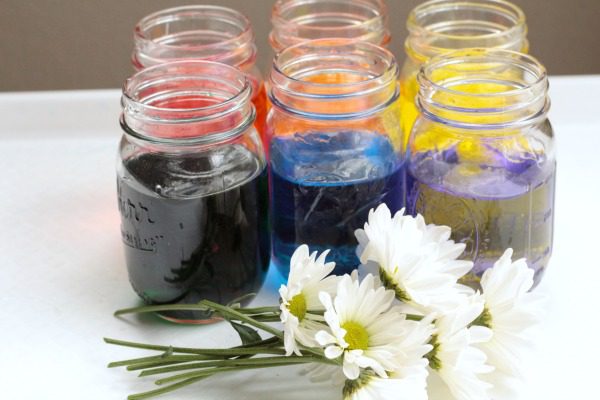
Cut each white flower stem at an angle and place in the water.
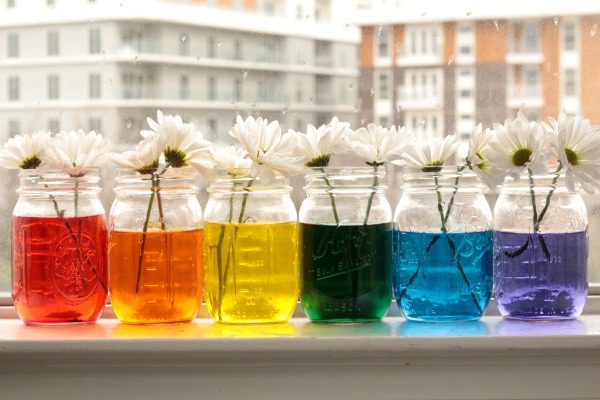
Put your flowers in a sunny place, and wait!
What happens when you put white flowers in colored water
Within 3 days you should see distinct colors start to emerge. Keep your flowers in the colored water until they start to wilt for maximum color absorption.
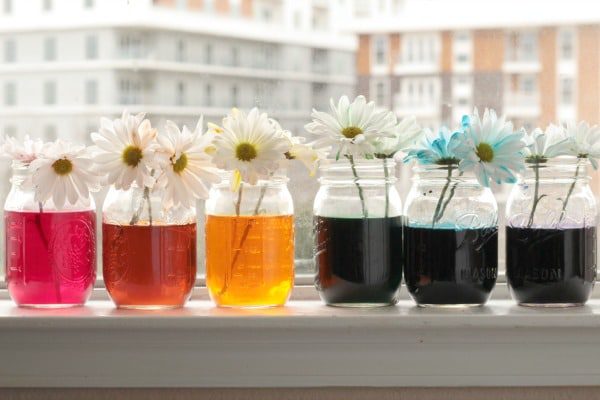
Pro tip: If your flowers don’t appear to be changing color within 3 days or so, you probably are A, using a less-than-ideal type of flower like we were (carnations are best, turns out), or B, didn’t put enough dye in the jars. To get our flowers to change color, we had to use nearly a whole bottle of liquid dye per jar.
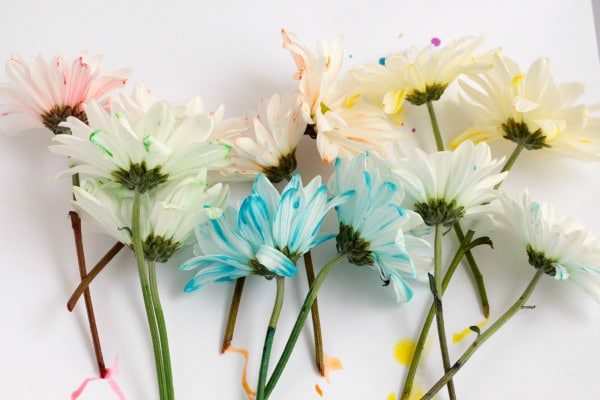
The type of dye also matters. We tried gel food coloring first, but it wasn’t strong enough to dye the flowers.


